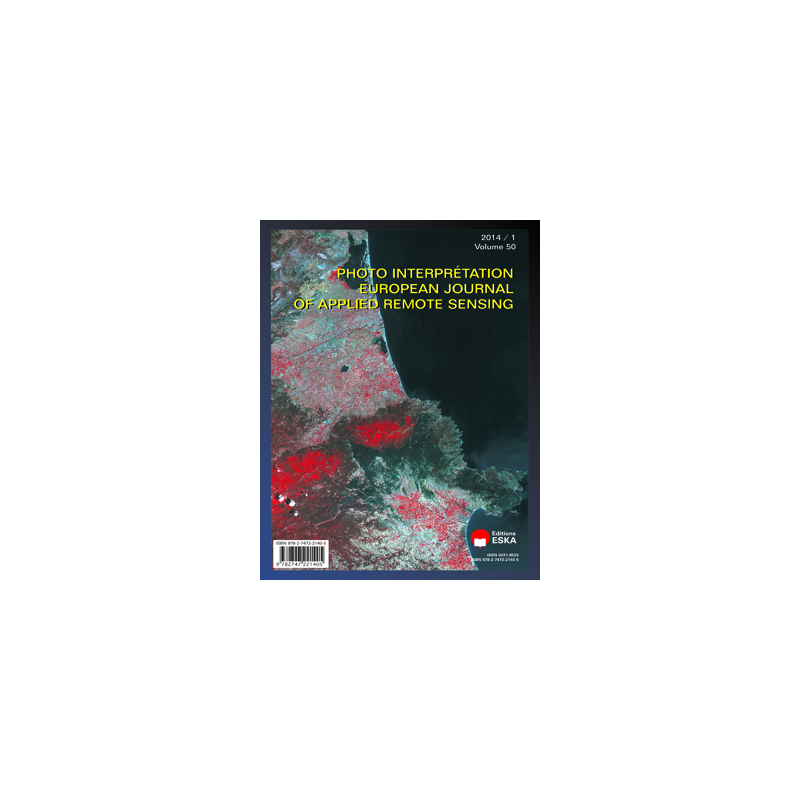



 Security policy
Security policy
(edit with the Customer Reassurance module)
 Delivery policy
Delivery policy
(edit with the Customer Reassurance module)
Article: Mining and metallurgical archaeology in Bolivia using satellite imagery for prospecting arid regions
Florian TEREYGEOL 1, Jean-Paul DEROIN 2, Pablo CRUZ 3, Ivan GUILLOT 4, Jean-Charles MEAUDRE 1
1 CNRS, UMR 5060 IRAMAT-LMC, Belfort, France
2 Université de Reims Champagne-Ardenne, GEGENAA EA 3795, Reims, France
3 CONICET-FUNDANDES, Buenos Aires, Argentine
4 Université Paris-Est Créteil, CNRS UMR 7182 MCMC-ICMPE Thiais, France
Abstract
Bolivia is a rich country for archeometallurgy field research. Sites mark the countryside, covering a wide chronology that stretches from the first age of metals up to present. Due to environmental conditions, these sites are also frequently very well preserved. Unfortunately, the level of infrastructural development in Bolivia makes many of these sites very difficult to access. New tools for archaeological research can help to mitigate, at least partially, the very pragmatic problems of mission costs and field access by relocating a part of the field work to the laboratory. It still is necessary to evaluate the potential of these new techniques, and specifically, remote detection in the field of mining and metallurgical archaeology. Very positive results have been reached in other fields (Deroin et al., 2012a). Given this, it seems worthwhile to further define how archaeologists could these new techniques in various contexts.
The remote silver mines of San Antonio in southern Lipez range from an elevation of 4600m to 4800m. The mining and metallurgical complex is associated with two urban areas, now abandoned. The main mining period took place between 1640 and 1700. The main difficulties lie in the remoteness of the site and the lack of any logistic support.
Therefore, the archaeological survey of the mining site and urban areas of San Antonio de Lipez that extend over several square kilometers should have been rethought. A pan-sharpened GeoEye-1 scene was captured a few weeks before the fieldwork. This equipment is the most sophisticated in the market of commercial satellite images. It allows one to obtain panchromatic images with 41 cm pixel size, multi-spectral in 1.65 m, the whole on 15.2 km scenes. The sensor is directional, so we were able to acquire a scene on March 24th, 2011. Because we requested to exclude images with cloud layers, and because the shooting window opened only every 15 days, we obtained our image very close to the dates of our field mission (May, 2011), leaving not enough time for the preparation of the image. The color images from GeoEye-1 were created using a pansharpening process, the spectral multi-synthesis of high-resolution images taking into account blue, green, red and close infrared. Preliminary work on the high resolution satellite imagery included the drawing of a map of the archaeological remains. Only two archeologists were necessary for the field checking. This latter lasted only four days.
A first image processing was used to draw the detailed map of the archaeological structures. These plans were used as support during the survey. The aim was to make an initial assessment of buildings and structures. This is reason why we wanted to assess the degree of confidence that we could get in our interpretations. A second image processing subsequent to the survey was conducted. It aims, in a methodological approach, to highlight the elements seen and identified in work field, those uncollected and those were fakes. The final result is largely satisfactory in the context of an archaeological survey and particularly to a cost / time ratio.
The combination of GeoEye-1 image interpretation and field information opens up new perspectives in industrial, metallurgical, and mining archaeological researches in an arid and inhospitable context.
Keywords : mining and archaeological metallurgical